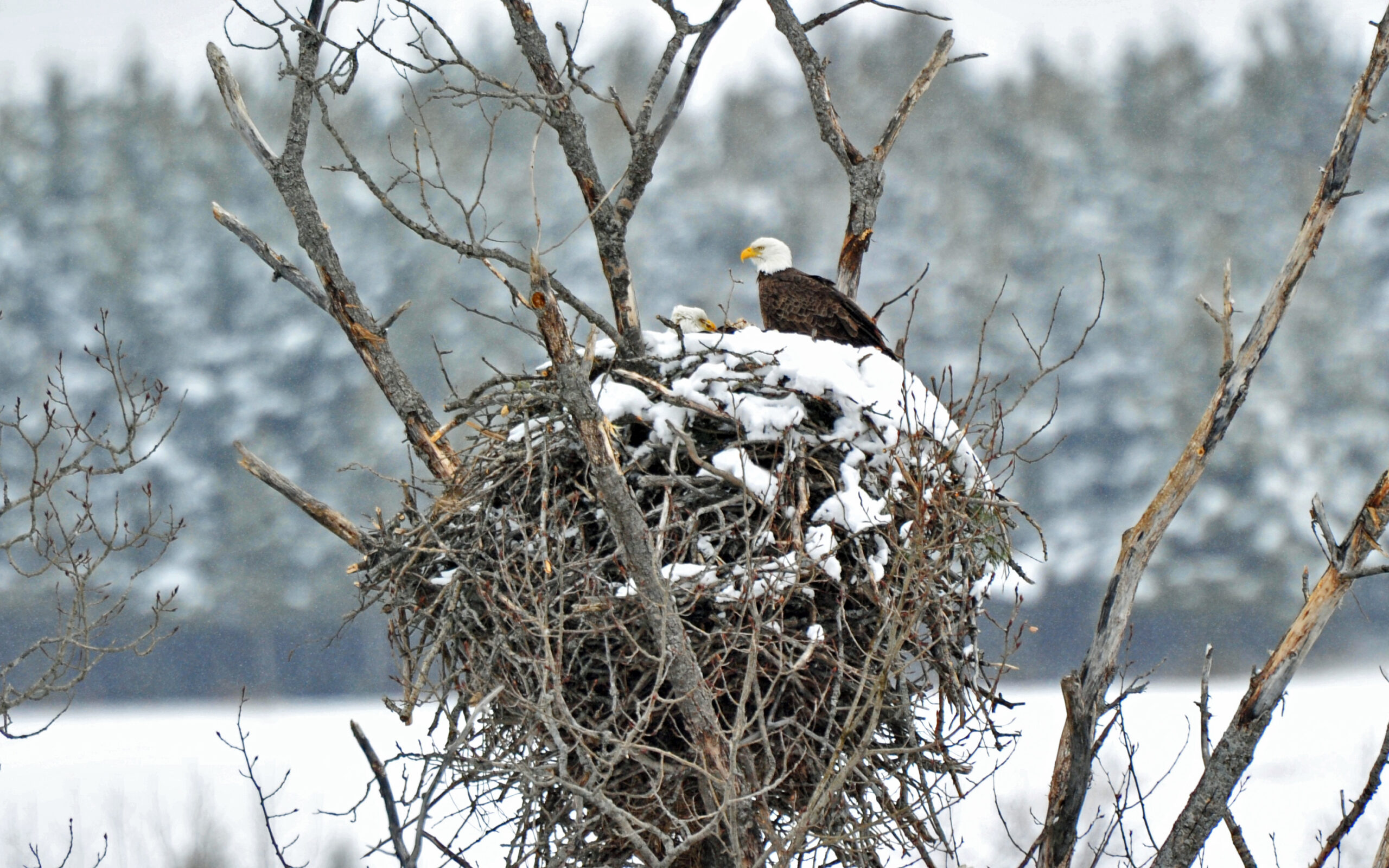
AUGUSTA, Maine – Maine’s bald eagle population continues to soar, increasing in the latest survey by 101 nesting pairs to a total of 733, an increase of 16 percent since the Department of Inland Fisheries and Wildlife conducted the last bald eagle survey five years ago in 2013.
Maine’s bald eagle population continues to grow in numbers across the entire state, affirming the remarkable rebound from the brink for this once-endangered species. MDIFW, working with private landowners, municipalities and other partners achieved exceptional results with the population rebounding from just 21 nesting pairs in 1967 to the 733 nesting pairs now.
“We documented increases statewide in all 16 counties, but the highest population growth rates continue a recent shift westward and northward across the state,” said MDIFW’s Charlie Todd, the endangered and threatened species coordinator who has been instrumental in guiding bald eagle recovery in Maine since the late 1970s. The aerial survey costs during 2018 were supported by Wildlife and Sportfish Restoration funds and the Maine Outdoor Heritage Fund.
“Nine counties across central, southern, western, and northern Maine have eagle populations growing faster than the statewide average,” said Todd. “Downeast Maine remains the state’s stronghold and boasts the highest density of breeding eagles in any region between the Chesapeake Bay area and Nova Scotia.”
A crew of four warden pilots and 17 wildlife biologists logged 240 hours in MDIFW aircraft documenting nests throughout the state. Late season snowstorms in March forced many eagles off their eggs, delayed egg-laying for others, and destroyed or damaged many more nests than normal. The count was completed late this summer.
The survey was timed throughout the state to match periods in the breeding cycle when eagles are mostly at nests. Nesting dates can vary by six weeks among neighboring eagle pairs. Egg-laying dates range from February 25 to May 7 across Maine. and an adult eagle must incubate its eggs nearly full time for a five-week period. Nestling eaglets remain in the nest for at least three months before they can fly. Most pairs make only one breeding attempt each year.
MDIFW checked more than 1,800 traditional sites over an eight-week period, checking all nest locations documented since 1962. Eagles are usually very loyal to nests. They relocate only out of necessity. A nest in Blue Hill (Hancock County) now holds the record for continuous use, 41 years (and counting) since 1978. Searches occur in other areas that offer potential eagle habitat not previously used by nesting eagles along lakes, rivers, and coastal waters. Crews found 270 new nests this year in Maine or in neighboring New Hampshire, New Brunswick, and Quebec where eagles can move freely across boundary waters.
“Eagles spend less time near nests if they are not tending eggs or nestlings. The severe snowstorms in early-March caused widespread breeding failures that complicated the survey,” said Todd. Along with the tally of 733 nesting pairs, the crews noted single adults at 54 other nests and no eagle activity in 90 former nesting territories. Todd estimated that they may have missed as many as forty pairs, which is the highest count of nesting eagles ever in Maine.
Generations of bald eagles will use the same nesting territory sequentially over decades. In fact, the same nest is often reused if its ever enlarging size does not harm the tree. A nest in the Swan Island Wildlife Management Area in Sagadahoc County measured 20 feet vertically when it was first found in 1964; biologists conservatively estimate it had been in use for at least 60 years.
The so-called “great nest” nearly vanished (as did Maine’s eagle population) when it sat vacant for 27 years starting in 1973. As the population rebounded, eagles returned and repaired a remnant nest of the “great nest.” Fourteen eagles fledged from it during annual monitoring from 2000 to 2013. The old nest still stands but was damaged and unused in 2018, however resident eagles have built a new one 150 yards away. Regardless, that pine tree has endured for decades that saw the near demise and then the full recovery of bald eagles. The white pine, Maine’s state tree, is favored by eagles nesting across Maine.
Bald eagles were removed from the state endangered and threatened list in 2009. They were originally listed as endangered in 1978. The low point for bald eagles in Maine occurred in 1967 when only 21 nesting pairs were found and they raised only 4 fledgling eaglets. The bald eagle has long been revered as a majestic bird, our national symbol, and an indicator of environmental quality. Now it’s one of the premiere examples of conservation success.







